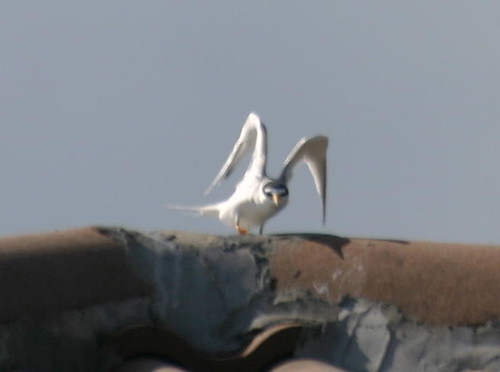Two More “Donuts” With My Coffee
Miami Radar this morning showed two “donuts.” The first, rather small, appears NW of Fort Lauderdale in the 6:59 AM frame, and is located on or near Loxahatchee National Wildlife Refuge in Palm County. The other, a larger and more distinct burst shows up best in the final frame and is 25 miles SW of Fort Lauderdale, in the same location as the one we captured and posted on March 31. David LaPluma (BADBIRDZ) believes these represent the departure of flocks of wading birds or blackbirds from concentrated roosts in wetlands.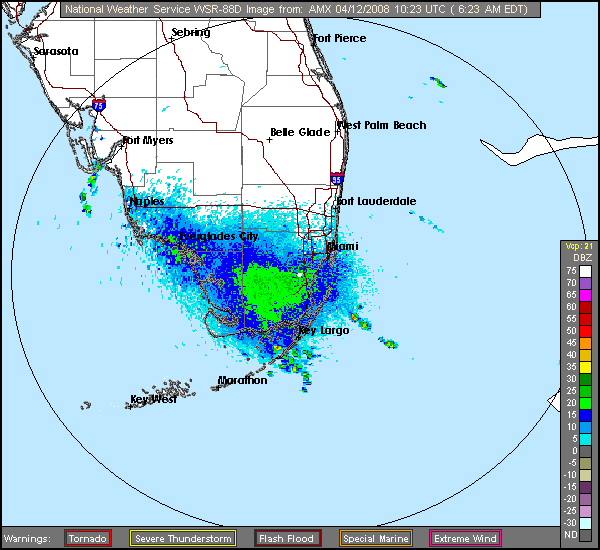
Morning Walk
Last night, we noted that the Key West radar showed the beginning of a large movement of migrants that seemed to be headed our way from Cuba. BADBIRDZ followed their progress overnight. Indeed, many settled down in the early morning hours. The birds were dispersed, but our house is within the landing area. This morning we walked to our local patch early, to try our luck.Our “patch” is a water and wildlife conservation area set aside by developers to mitigate some of the damage they did to the Everglades ecosystem. It is to the left (west) of this levee and gravel track that separates it from the 198th Avenue canal and our subdivision.
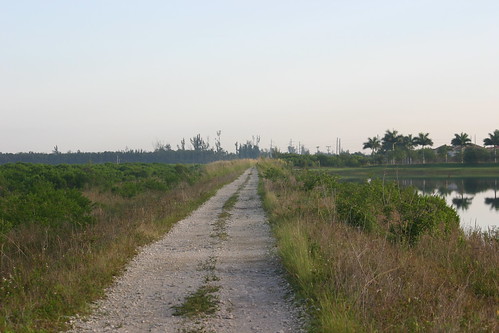
We hoped that maybe the migrating birds would be literally dripping from the trees. Instead we found the area to be quietly beautiful. Butterflies were first to catch our eyes.
The Queen Butterfly favors plants in the Milkweed family.
The White Peacock Butterfly is found year round in the deep South, and specializes in a composite white sunflower called Shepherd’s Needle.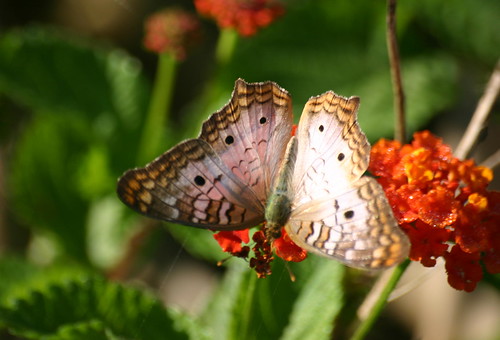
Turning our attention to the sounds of birds, Catbirds were calling everywhere. They must have accounted for some of those radar echoes last night. Northern Cardinals and Carolina Wrens whistled. A Yellow-billed Cuckoo flew silently by, and a gray-plumaged male Northern Harrier seemed to be hanging around a bit late in the season. One Great Crested Flycatcher called from the treetops. Yellowthroats and Prairie Warblers were here, there and everywhere. White-eyed Vireos were also fairly numerous, but, as usual very difficult to see in the heavy foliage.
The distinctive field mark of this bird is obscured by a branch.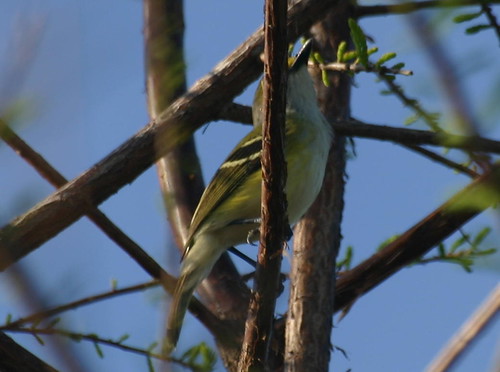
Ah, that’s better. The White-eyed Vireo bursts into song. 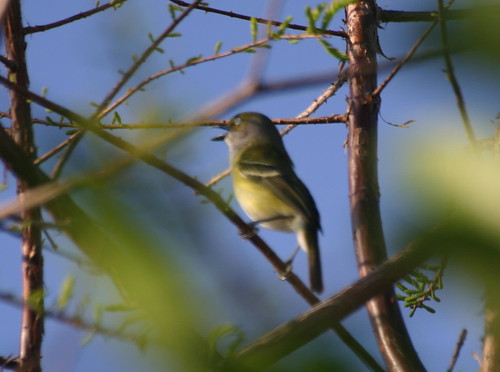
Least Terns returned to our small lake only four days ago, but are already assembling on their favorite “lek,” the peak of our next door neighbor’s house. This female just swallowed a minnow offered by a courting male. I missed the exchange!